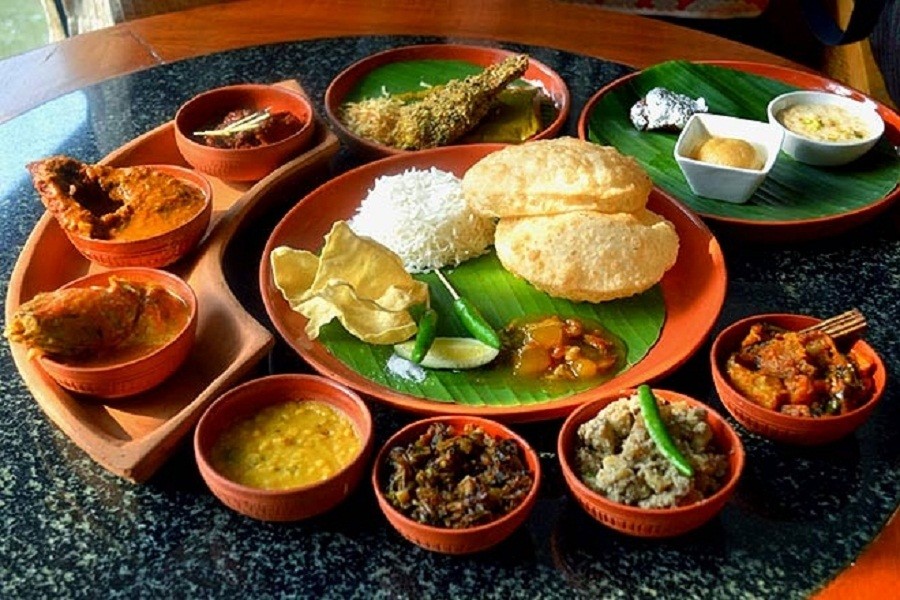There is a proverb famous among the Bengalis - “Baro mashe tero parbon,” which means there are more festivals here than there are months in a year.
And every Bengali festival means big feasts. Since it is Autumn now-- the season of Durga-puja, festive feasts are all around.
To some, Puja means hot fried Luchi with Alur-dom, sometimes smoked hot Khichuri with Papor-bhaja and Beguni, and sometimes puja means lots of Narkeler-naru (Coconut sweets).
There is an interesting story that can give us an idea about the attraction of Bengali people to Luchi.
Once Rabindranath Tagore and Gandhiji were having breakfast together. Gandhiji did not like Luchi, so he was having Porridge of Oats while Tagore was having hot fried Luchi.
Gandhiji saw this and said, “Gurudev, you do not know that you are consuming poison.” In reply, Rabindranath said, "Might be poison, but its action is very slow. Because I have been eating this poison for the last sixty years!"
Vegetable items
While at other times of the year, in most cases, grand feasts mean meat and other non-veg, there are myriads of vegetable items to have with Luchi in the Puja feast.
Kumror Chhoka (Pumpkin Curry), Pachmishali Niramish, Potoler Dolma, Shukto, Payesh, Shuji, Shondesh, Chhanar Dalna, Soya-rosha, Chick-peas, etc. will not let miss non-veg foods on the table.
In most cases, only vegetarian food is eaten on the Saptami and Ashtami. Some people remain vegetarian during the whole Durga-puja fest. They don’t even consume onion during those days.
On the other hand, another integral part of Durgapuja is ‘Bhog-er-khichuri.’ In some places, both Bhuna khichuri and semi-liquid khichuri are cooked and served with vegetable fritters, crispy Papor-bhaja, Alur Dom, Beguni, Labra, chutney, etc.
The Bhog of Navami's noon is called Raajbhog, which is usually Bhuna Khichuri, served with a variety of Bhaji and Bora like Fulkopi-bora, Begun-bora, Alu-bhaja, Chholar dal (chickpeas), etc.
After the Mahabali of Navami or on the Maha-Dashami, various non-veg items reign all over the dining table.
Bengali's favourite Shorshe-Ilish takes place in one corner of the table with Mutton-kosha and Kochi-pathar-jhol. Some people make various fish items including Prawn Malaikari. Mahabali meat is usually cooked without onions.
Sweetmeats in abundance
Naru, Sandesh and Nimki can be seen in Durga Puja everywhere. As they can be stored at room temperature, these are prepared in advance so that, can be served in the morning on the days of Saptami, Ashtami and Navami.
The main attraction on the day of Vijaya-Dashami is sweets. According to Hindu belief, on this day, Goddess Durga killed the demon ‘Asur.’ So, Hindu people share sweets with each other as a part of the celebration.
There is a tradition of making different types of Pitha (cakes) for this day, such as Malpowa, Narikel Puli, Kheer Lobongo, etc. Meanwhile, Naru, Yogurt, Sweetmeats, Payesh, etc. are the common ones.


